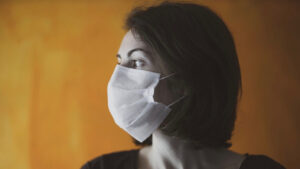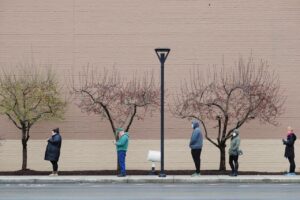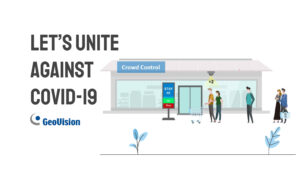
VCA or video analytics have long played a significant role in security. Now, with covid-19 affecting millions globally, video analytics can also contribute to disease prevention and control.
Since covid-19 began in late 2019, the disease has infected million and killed tens of thousands. Needless to say, this has changed the way end user entities run their businesses. Lockdowns are issued in cities across the globe. For cities that are not subject to stringent lockdown measures, public venues such as malls, restaurants and other public places have issued orders to keep visitors to a minimum. Social distancing is practiced everywhere.
To properly enforce these rules and guidelines, end users increasingly turn to video surveillance supported with video analytics, which has played a huge role in security over the years. Now, during covid-19, they can also come in handy for disease prevention and control purposes.
Video analytics has always been a critical component in enabling security and ensuring public safety, from preventing incidents by monitoring live feeds to supporting investigations by combing through recordings for video evidence. Today, the role of intelligent video analytics has never been more critical in protecting the public and stopping the spread of coronavirus. By effectively supporting physical distancing measures, contact tracing, occupancy management and more, the power of video content shows great promise in not only slowing the spread, but also supporting the safe re-opening of stores, restaurants, places of employment and the like.
Video analytics can be helpful in the following disease prevention and control applications.
-
People counting

With covid-19, many countries/cities have announced building occupancy guidelines. Singapore, for example, has ordered that malls and retail outlets keep visitors at a certain number. In this regard, people counting can come in handy.
Organizations can seamlessly and continually monitor their occupancy statistics with video content analytic people counting, to facilitate compliance and protect visitors and staff, regardless of the venue. One way to avoid unnecessary crowding is by proactively detecting mounting traffic as it forms. By configuring people counting alerts for tight hallways and spaces, operators can monitor and identify potential crowding and react preventively and proactively to mitigate risks by sending personnel to redirect traffic to other walkways or access points.

Social distancing is also heavily advised by governments and health experts to prevent the spread of the disease. In Taiwan, for example, people in public indoor places must be within no less than 1.5 meters from each other. Again, video analytics can be helpful. When organizations leverage intelligent video surveillance, they can configure rule-based alerts to trigger notifications when certain pre-determined thresholds have been exceeded. This is especially helpful for preventing overcrowding and traffic bottlenecks for queuing scenarios such as grocery markets, pharmacies and in waiting areas, and could directly impact potential exposure to illness.
-
Contact tracing
![]()
Video analytics can help trace infected individuals’ contact with their surroundings. A typical scenario would include:
Medical Testing: Confirm individual has contacted the virus.
Digital Imaging: Add individual to the video content analytics platform for rapid video filtering based on face recognition.
Tracking: Identify appearances of the individual across cameras in an environment.
Contact Tracing: Pinpoint the people with whom the infected individual came into contact with over the course of the video duration.
Guidance: Direct at-risk individuals who made contact with the individual to self-isolate.
While increased demand is seen in retail establishments, public safety agencies, transportation and manufacturing, other verticals such as law enforcement, safe cities and higher education can benefit as well.
Source: a&s Magazine



































































